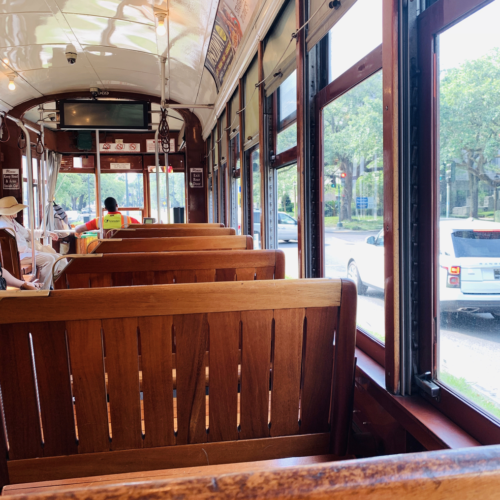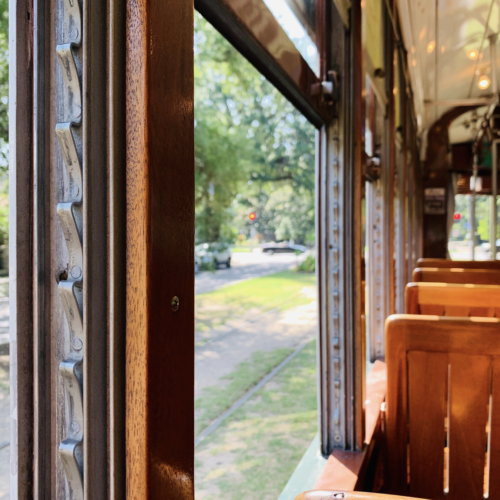Editors Note: The following is a week-long series called “The Truth about the Big Easy” curated by Parker Kim. This series is in partnership with Via Nola Vie and aims to give transplants and locals a series look at what is happening in our local government.
New Orleans always seems to be being left out of the national conversation. Whenever New Orleans is being mentioned it is either about a natural disaster or a report on the rampant partying going on on Bourbon. Sometimes we forget that there is so much more happening behind the scenes in our city. The floats this year at Krewe De Veux were a clear indication that there is more going on behind the curtain in the New Orleans government. From public education to infrastructure this series of articles will give you a better indication of the current state of this great city. There are so many questions that need to be answered and hopefully, this series of articles opens the curtain to why things are the way they are here maybe just a little bit.

Photo of New Orleans Streetcar.
(Photo by: Gary Lee Todd)
Before Hurricane Katrina hit in 2005, New Orleans had one of the most robust electric rail systems in the world, with streetcars lines expanding into urban neighborhoods and a bus system that spanned the entire city. The Canal streetcar line had just reopened in 2004 and ran from the Mississippi River all the way down Canal street and the RTA bus system served roughly 40,000,000 riders a year. While some New Orleanians still lived far from streetcar lines or RTA bus stops, the mix of the RTA bus system and the streetcar provided transportation to the majority of residents across the city.
Then comes 2005.
When the levees failed New Orleans, nearly the entire RTA bus fleet and half of the city’s streetcars were deemed unusable due to flooding. The complete destruction of the transportation industry exacerbated and exposed many of the systemic issues throughout the city by washing away existing structures. This rock-bottom hit in transportation quality incentivized a complete reshaping of the transportation industry in the city.
Over 500 workers employed at 32 different hotels across New Orleans participated in a Ride New Orleans survey about how they get to work every day. Of the surveyed workers, 48 percent of them rely on public transit. Over 60 percent of the public transit users were late at least one time within the past month (relative to survey date) because of unreliable transportation, and more than ⅓ of the workers were late more than once due to a late bus or streetcar. The survey also revealed that the average commute time for the workers who relied on public transit is 46 minutes, which is twice the average New Orleans commute time for people with their own vehicle.
People of color are disproportionately represented within these statistics: the unemployment rate for Black workers (at 10.5 percent) is almost double (and growing with the economic effects of the pandemic) than that of White workers (5.5 percent). While almost every neighborhood in New Orleans saw a steep decline in transit services after Katrina, low-income neighborhoods still have not seen their numbers rebound to where they were before, whereas higher-income areas have seen sharp inclines in transit efficiency and frequency.

Picture taken from inside the streetcar. Photo by: Haley Neff
New Orleans is ranked the second worst state in the U.S. in income equality, according to a Bloomberg ranking, a statistic that correlates with high unemployment rates and high poverty rates throughout the city. The tourism industry plays a complex role in perpetuating income inequality in New Orleans. While the tourism industry has created many jobs for locals, these jobs typically offer minimum wage, minimal benefits and require employees to work long hours. Many of these jobs are located in the French Quarter, a tourism hot-spot, with many of its workers traveling from parishes far away.
New Orleans was given Federal Emergency Management Agency (FEMA) funding to revamp the transportation system after Katrina, but chaos ensued due to unreliable FEMA staff and inadequate funding. The main focus of the city was rebuilding the bus system until New Orleans received a $45 million dollar TIGER (Transportation Investment Generating Economic Recovery) categorical grant with the sole purpose of rebuilding the streetcar system. The city accepted this grant because rail transit was believed to bring in more revenue from tourism than buses would from locals.
However, the TIGER funding only covered the creation of the Loyola Line, leaving the Rampart and St. Claude lines to the use of government funds, thus taking away money for bus line restoration that residents relied on. By 2012, New Orleans had restored 77 percent of the weekly transit trips offered on Riverfront, St. Charles, and Canal Streetcar lines in 2005. Yet, only 29 percent of the weekly bus transit trips offered in 2005 had been restored by 2012. The Riverfront, St. Charles, and Canal lines only perpetuated the low-income neighborhoods’ lack of access to public transportation. The restored lines outline mostly white and wealthy neighborhoods, rather than places where the lack of access to the transit system persists.

Picture taken from inside the streetcar. Photo by: Haley Neff
In 2020, and for the past three years, the average New Orleans transit rider can only access 12 percent of the city’s jobs within 30 minutes. Further, about one in five New Orleanians lack access to a reliable vehicle, which is twice the nation’s average. Ride New Orleans reported a 55 percent decrease in available service in 2015 compared to pre-Katrina, exposing how transportation levels still have not rebounded 10 years later.
Creating more streetcar lines is not necessarily the solution. Streetcar lines can lead to gentrification if created in low-income areas due to their tourist draw, which can ultimately displace more low-income residents instead of helping them. Typically, in places where streetcars are created, bus stops are eliminated so as to not over-saturate the area, removing options for local residents and forcing many low-income workers to endure upwards of hour-long commutes to work every day.
Transit advocacy group Ride New Orleans is working to make transportation more equitable throughout the city. Many people believe that the industry is moving in the right direction, but it still has a long way to go to meet the city’s goal of ending income inequality. Hurricane Katrina wiped the transportation slate clean, but when New Orleans’ officials went back in to pick up the pieces, those who rely on public transportation fell between the cracks.
 NOLAbeings
Multimedia artist Claire Bangser created NOLAbeings as a portrait-based story project that marries...
NOLAbeings
Multimedia artist Claire Bangser created NOLAbeings as a portrait-based story project that marries...
 Data corner: Adobe Suite (create a PDF, social media graphic, presentation, edit a photo and video
Data corner is where you go to work with analytics and top tech skills. It takes on everything from PERL and SQL to Canva and Sprout Social.
Data corner: Adobe Suite (create a PDF, social media graphic, presentation, edit a photo and video
Data corner is where you go to work with analytics and top tech skills. It takes on everything from PERL and SQL to Canva and Sprout Social.
